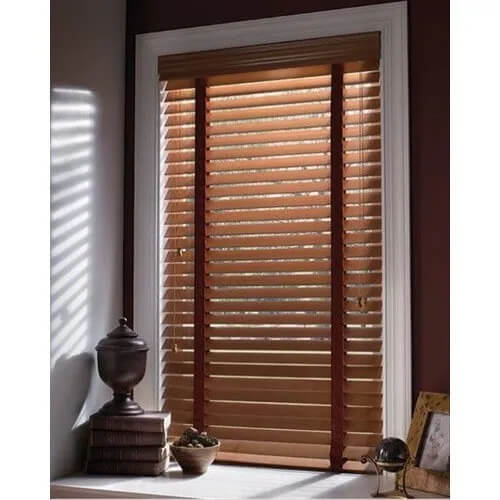Blog

The Impact of Window Blinds on Energy Efficiency
In the realm of sustainable living and eco-consciousness, every aspect of our homes plays a role in energy efficiency. From insulation to lighting, every choice we make can either contribute to or detract from our efforts to conserve energy and reduce our carbon footprint. Surprisingly, one often overlooked element in this equation is the humble window blind. While primarily associated with aesthetics and privacy, window blinds can have a significant impact on energy efficiency. Let’s delve into how these seemingly simple fixtures can make a substantial difference in the energy consumption of a home.
- Thermal Regulation: One of the most significant contributions of window blinds to energy efficiency is their ability to regulate temperature within a room. During hot summer months, sunlight streaming through windows can raise indoor temperatures, causing air conditioning systems to work overtime. Similarly, in the winter, heat loss through windows can lead to increased heating costs. However, by strategically adjusting blinds, homeowners can control the amount of sunlight entering their homes. Closing blinds during the hottest parts of the day can prevent solar heat gain, reducing the need for air conditioning. Conversely, opening blinds during the day to allow sunlight in, then closing them at night to trap heat, can help minimize reliance on heating systems.
- Insulation: Beyond their role in controlling sunlight, window blinds also provide an additional layer of insulation. When closed, blinds create a barrier between the interior of a home and the outside environment. This barrier helps prevent heat transfer, both in and out of the home, thereby reducing the workload on heating and cooling systems. Blinds made from insulating materials such as wood or cellular shades are particularly effective in this regard, as they trap air and create a buffer zone between the window and the room. As a result, homes equipped with properly installed blinds experience less temperature fluctuation and maintain more consistent indoor comfort levels throughout the year.
- UV Protection: Another aspect of energy efficiency often overlooked is the impact of ultraviolet (UV) radiation on interior furnishings. Prolonged exposure to sunlight can cause fading and deterioration of furniture, flooring, and other decor items. However, window blinds act as a barrier against harmful UV rays, effectively shielding interiors from sun damage. By reducing the need to replace or repair sun-damaged items, blinds contribute to long-term energy savings and environmental sustainability.
- Daylighting: While the primary focus of window blinds in energy efficiency is often on their role in controlling heat and light, they also play a crucial role in promoting daylighting. Daylighting refers to the strategic use of natural light to illuminate interior spaces, reducing the need for artificial lighting during the day. By allowing homeowners to adjust the amount of sunlight entering a room, blinds enable them to optimize daylighting levels according to their needs. This not only reduces energy consumption associated with artificial lighting but also enhances occupant well-being by providing access to natural light, which has been linked to improved mood and productivity.
- Smart Solutions: In an era of smart homes and energy-efficient technology, window blinds are also evolving to offer advanced features that further enhance their energy-saving capabilities. Smart blinds equipped with sensors and automated controls can adjust themselves based on factors such as time of day, outdoor temperature, and sunlight intensity. By integrating with home automation systems, these blinds can be programmed to optimize energy efficiency automatically, reducing the need for manual intervention.

